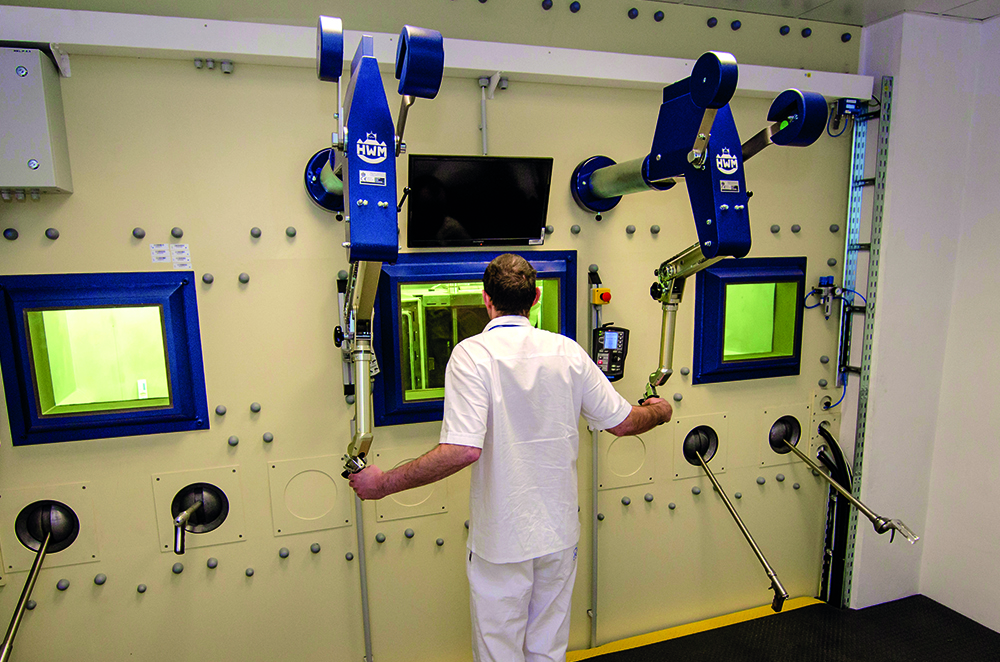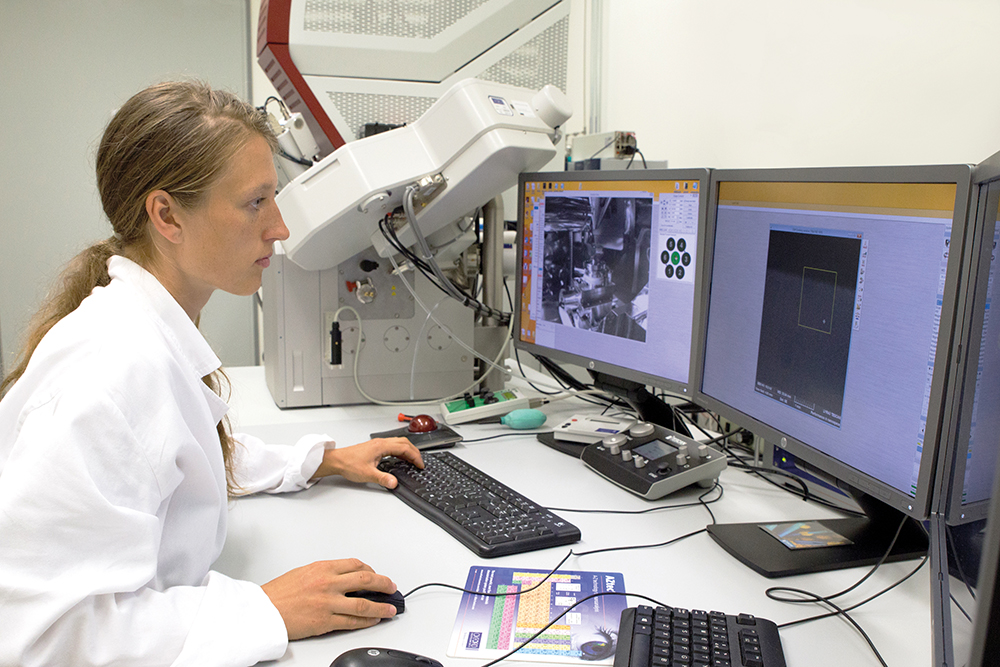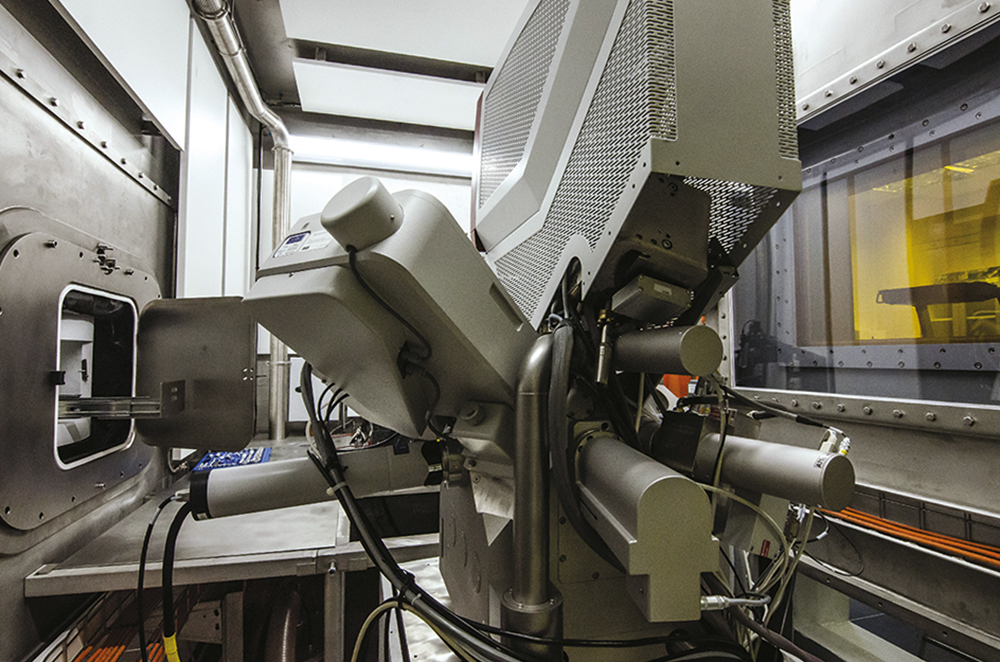Three Mile Island, Chernobyl, Fukushima. The names strike fear into the hearts of people who live in communities near nuclear power plants, and people in countries downwind. But in this age of climate change, where the demand for energy is growing, clean alternatives to fossil fuels must be found. Nuclear energy is a key component of the existing energy mix of many countries around the globe – but can it be made safe?
TESCAN is working with a Czech based company, ÚJV Řež a.s., with the goal of doing just that.
For more than 60 years ÚJV Řež (formerly Institute – NRI- Nuclear Research Institute Řež) has conducted fundamental research related to nuclear energy. Today the company also provides a range of services that support the safety and efficiency of nuclear power plants. Its subsidiary, the Research Centre Řež (CV Řež ), has state-of-the-art facilities equipped with cutting-edge scientific instrumentation, including a TESCAN Focused Ion Beam Scanning Electron Microscope (FIB-SEM).
TESCAN FIB-SEM is a particularly versatile and easy to use instrument. Its user-friendly software interface facilitates quick access to the main functions of the microscope, thereby increasing productivity. ‘This microscope has several skill levels, it is very easy to use and the user quickly gets acquainted with the instrument, and in no time the user is able to obtain high-resolution SEM images. It is the ideal instrument for a multiuser environment like ours,’ says Dr. Jan Lorinčík, one of the many research scientists at CV Řež. Using this instrument CV Řež is conducting crucial corrosion studies to enhance safety at nuclear power plants. At Fukushima, the zirconium alloy cladding of the nuclear fuel rods came into contact with hot steam. This caused hydrogen build up as well as oxide on the cladding, undermining and degrading the mechanical properties of the cladding and making it brittle. Corrosion such as this happens even under normal operating conditions in nuclear power plants, albeit more slowly, and can lead to leakage of the radioactive fuel material into the water in the innermost chamber of the nuclear reactor. The CV Řež team are engaged in the development of new materials and types of alloy claddings with enhanced mechanical properties and higher resistance to corrosion. ‘The more we understand the mechanism of corrosion the better we can improve the material to make it more resistant, hence safer,’ says Dr. Lorinčík. Dr. Lorinčík is part of an international collaboration that has recently found a new method of enhancing the lifetime of zirconium cladding by adding a coating of nanocrystalline diamonds to counteract the corrosion. The nanocrystalline diamond film changes the properties of the underlying alloy so that the uptake of hydrogen and oxygen is significantly reduced.
CV Řež is also using the TESCAN FIB-SEM to achieve safer, cleaner and more effective sources of nuclear energy by analyzing materials for the theoretical Generation IV nuclear reactor. The Generation IV multinational initiative, which is aimed at the development of high-efficiency, super-safe nuclear sources with low production of radioactive wastes, is currently being researched for commercialization with the expectation of being deployed in the mid to long term (2030–2050). The CV Řež research team tests new materials in experimental devices called ‘Loops’ that simulate specific technical and chemical conditions. They then use a range of techniques to collect information about changes that occur in the material under different conditions. A recent study carried out by this research group was a microstructural analysis of a type of metal alloy, the 800H steel, tested in a High Temperature Helium Loop, helium being the preferred coolant in the Generation IV Very High Temperature Reactor design option. The aim was to understand the degradation process this alloy undergoes when subjected to these test conditions. The research group uses the TESCAN FIB-SEM to prepare the ultra-thin, transparent specimens for measurement in a Transition Electron Microscope to observe and record the microstructure changes. Sometimes the researchers at CV Řež are REALLY challenged. After the Fukushima accident, CV Řež was commissioned by the International Atomic Energy Agency to develop a new analytical procedure for finding microscopic uranium particles in dust samples.
The Agency routinely collects such samples in the vicinity of nuclear power facilities for environmental monitoring and, after nuclear accidents, for forensic purposes. ‘It is an extremely challenging task to find microscopic uranium particles; commonly only one single microparticle is found in one cubic cm,’ explains Dr. Lorinčík. That’s like finding a coin on a football field. Using the scanning electron microscope capabilities of the TESCAN FIB-SEM instrument with its integrated Energy-Dispersive X-Ray detector, the CV Řež team has successfully located the micro-sized uranium particles and characterized their composition, size, and morphology. This is important since these characteristics are fingerprints that provide valuable information on the source of the particle and provide clues to what actually occurred in the reactor in the event of a nuclear accident. In these projects and in their other work, the team of world-renowned scientists at CV Řež has shown that the TESCAN FIB-SEM microscopes are reliable and effective tools for research in the field of nuclear energy. This is evidence of TESCAN’s commitment to deliver world-class scientific instrumentation to assist researchers in pushing the boundaries of scientific knowledge and contribute to making our world safer.
WHAT IS NUCLEAR ENERGY?
Nuclear (atomic) energy is the energy stored in the nucleus of an atom. When atoms are broken apart, in a process called fission, the energy is released and can be used to generate electricity. In nuclear power plants, energy is released by splitting a particular form of the uranium (uranium-235) in a controlled way. This energy, in the form of heat, is then used to turn water into steam. The steam spins turbines that drive generators to make electricity. Nuclear energy is considered a sustainable power source because a huge amount of energy is released, compared to burning coal or oil (about 3 million times as much). Electricity generated by nuclear energy does not emit carbon dioxide but it has environmental issues regarding radioactive waste disposal and safety issues.




